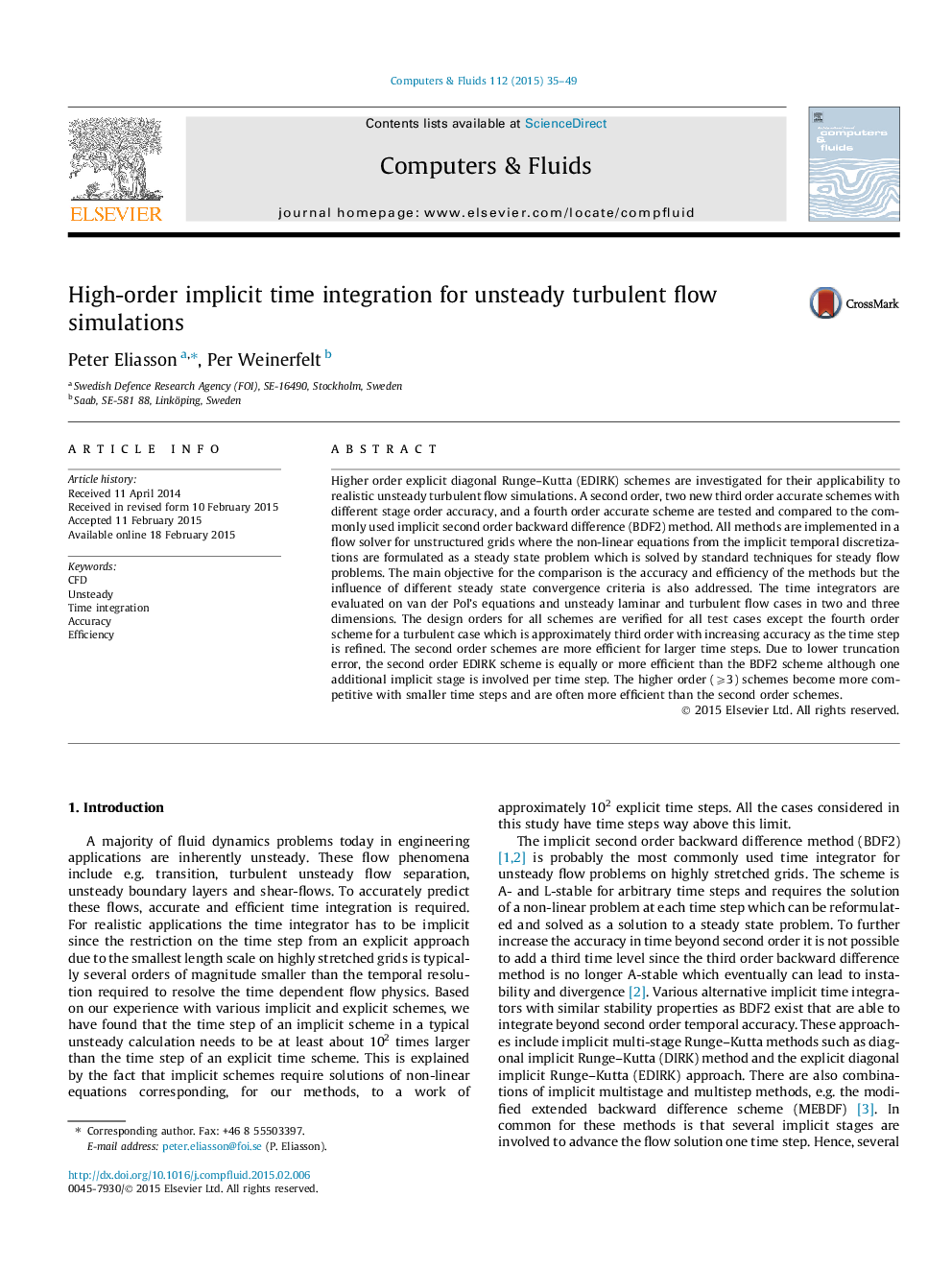| کد مقاله | کد نشریه | سال انتشار | مقاله انگلیسی | نسخه تمام متن |
|---|---|---|---|---|
| 761568 | 1462698 | 2015 | 15 صفحه PDF | دانلود رایگان |
• Diagonal implicit Runge–Kutta higher order accurate time integration.
• Comparisons to second order backward difference integration.
• Unsteady CFD calculations for laminar and turbulent flows.
• Up to fourth order accuracy in time demonstrated.
• Enhanced efficiency with Runge–Kutta schemes.
Higher order explicit diagonal Runge–Kutta (EDIRK) schemes are investigated for their applicability to realistic unsteady turbulent flow simulations. A second order, two new third order accurate schemes with different stage order accuracy, and a fourth order accurate scheme are tested and compared to the commonly used implicit second order backward difference (BDF2) method. All methods are implemented in a flow solver for unstructured grids where the non-linear equations from the implicit temporal discretizations are formulated as a steady state problem which is solved by standard techniques for steady flow problems. The main objective for the comparison is the accuracy and efficiency of the methods but the influence of different steady state convergence criteria is also addressed. The time integrators are evaluated on van der Pol’s equations and unsteady laminar and turbulent flow cases in two and three dimensions. The design orders for all schemes are verified for all test cases except the fourth order scheme for a turbulent case which is approximately third order with increasing accuracy as the time step is refined. The second order schemes are more efficient for larger time steps. Due to lower truncation error, the second order EDIRK scheme is equally or more efficient than the BDF2 scheme although one additional implicit stage is involved per time step. The higher order (⩾3) schemes become more competitive with smaller time steps and are often more efficient than the second order schemes.
Journal: Computers & Fluids - Volume 112, 2 May 2015, Pages 35–49
